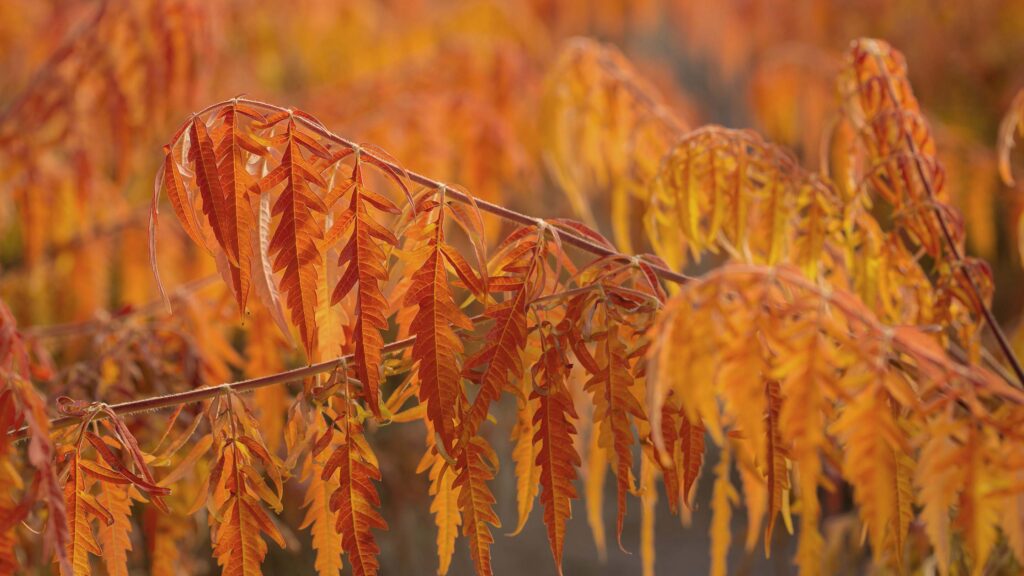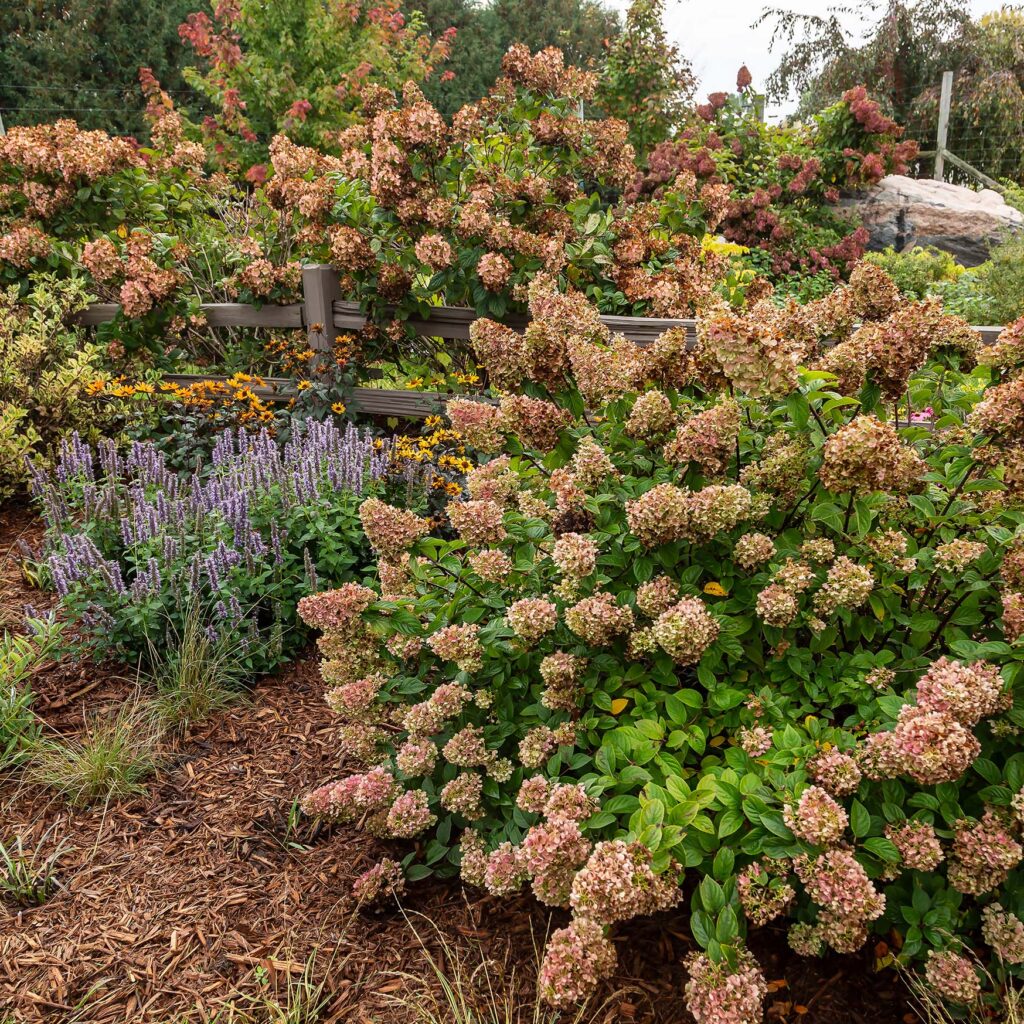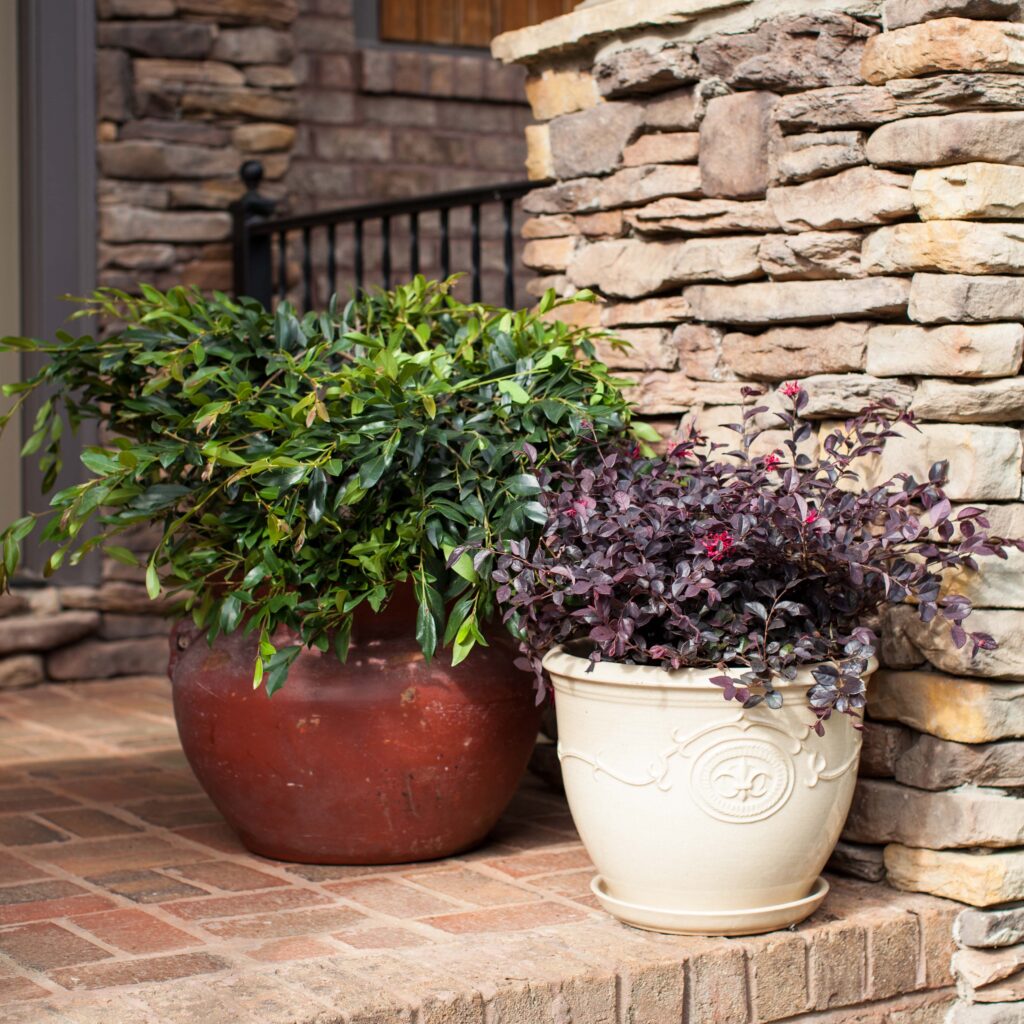If the air is crisp and the ground is covered with fallen red, yellow, and orange leaves, it’s a good sign winter is on its way. It’s also a good sign for you to start thinking about overwintering your much loved First Editions® plants. While not every variety in our collection needs added protection for the winter months, fall is an excellent time to get in the garden and assess each plant and its specific needs. Here are some things to keep in mind when overwintering your shrubs and trees.
 Tiger Eyes® Cutleaf Staghorn Sumac
Tiger Eyes® Cutleaf Staghorn SumacNo matter the climate you live in, overwintering is something you should be aware of. Even those who live in warm climates can see winter damage on plants if there’s a lot of temperature fluctuation. Overwintering is especially important for those who live in cold climates (typically zone 6 and below), because of the extreme temperature fluctuations and snowstorms. Each site and plant are different, so we don’t have an exhaustive list of which plants need protection in each area. An excellent place to start is knowing how old your plants are. It’s best to err on the safe side and give new plants added protection. It’s also important to pay attention to the weather. If you see there’s a long stretch of cold coming your way, like the polar vortexes we’ve seen in the past few years, you’ll want to cover your plants with a sheet to protect them from frost – and that’s important no matter the climate.
 Front: Strawberry Sundae® Panicle Hydrangea
Front: Strawberry Sundae® Panicle HydrangeaIf you want advice for a specific plant, you can always get in contact with your local extension office. Or, feel free to message @firsteditionsshrubstrees on social, and we’ll be glad to help!
If you’ve been fertilizing any plants in your landscape, make sure you stop doing so by August. The purpose of fertilizer is to promote new growth. If you fertilize too late into the year, that growth will get zapped by the cold temps because new growth is tender to the cold. That’s something neither you nor your plants would like, so put down the fertilizer until next spring.
One of the things you want to be aware of heading into winter is your plant’s roots. Roots can become damaged by the extreme cold, especially if frozen. The best source of protection for your roots is the soil around them that acts as a natural insulator, which is lucky for us! There are a few things to keep in mind when protecting your plant’s roots.
Snow is a terrific insulator! Have you ever heard the phrase “fresh blanket of snow”? Well, that’s what it is! Snow acts as a blanket for your soil by insulating and keeping temperatures consistent, making damaged roots less likely. So, if you live in a climate where it snows, think of those snowstorms as a benefit to your landscape and not just something you have to shovel off the driveway.
If you have the same plant in the ground as you do a container, it’s vital that you overwinter them differently. This is because the same amount of soil does not surround the container plantings as does those in the ground. Therefore, containers have less insulation around their roots and need a little extra TLC. Click here to learn more about how to prepare your First Editions® containers for winter.
 Front: Sparkling Sangria™ Fringe Flower
Front: Sparkling Sangria™ Fringe FlowerOverwintering your First Editions® Shrubs & Trees isn’t and shouldn’t be hard. It just takes a little extra time in the garden in the fall. And remember, it will all be worth it when your plants thrive during a cold, snowy winter and come back even more beautiful next spring!